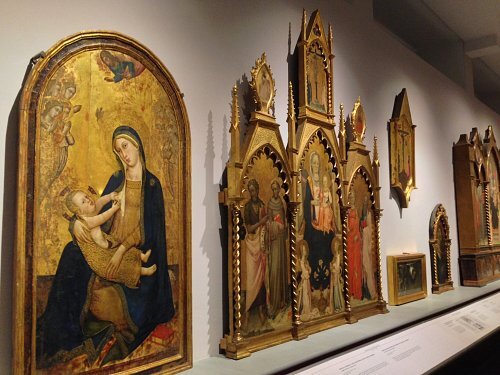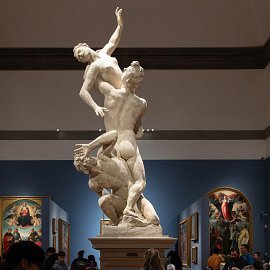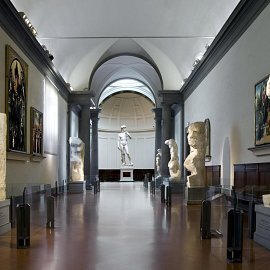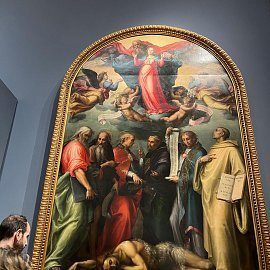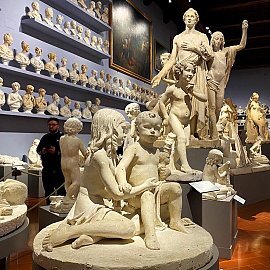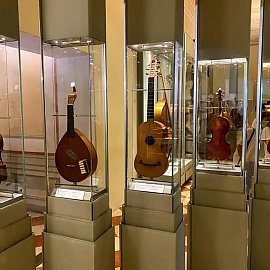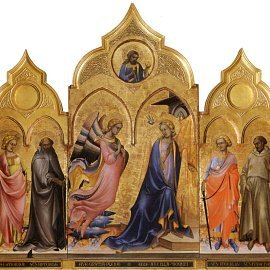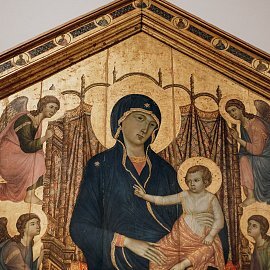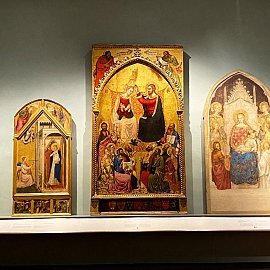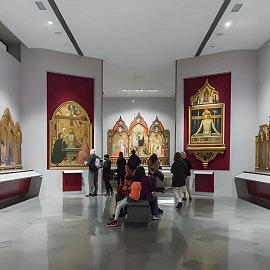The Accademia Gallery in Florence
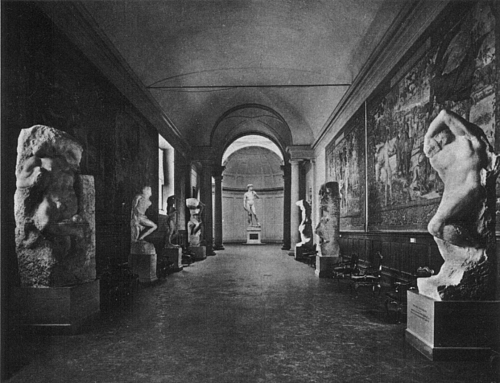
The History
The Accademia Gallery dates back to 1784 when the Grand Duke of Tuscany, Pietro Leopoldo, reorganized the Academy of Arts of Design in Florence that Cosimo I de' Medici had set up in 1563; it became part of his fine arts academy.
It moved into these two places: the fourteenth-century Hospital of San Matteo and the convent from San Niccolò di Cafaggio.
The collection of the museum grew after the dissolution of churches and convents that was mandated by Pietro Leopoldo in 1786 and later by Napoleon Bonaparte in 1810. But, a crucial moment in the museum's past happened in August 1873 when Michelangelo’s David was moved from Piazza della Signoria. This famous sculpture spent nine years inside a wooden box, waiting for the completion of the Tribune, created by architect Emilio De Fabris, to house it.
The Accademia Gallery, in the form we recognize now, got its official start back in 1882
The Collections
The Galleria dell’Accademia di Firenze has some of the world’s greatest collections of painting and sculpture, including works by Michelangelo and his statue of David, all accompanied by early Italian paintings of great wealth.
Plaster casts and models made by Lorenzo Bartolini and his student Luigi Pampaloni are also important, kept in Gipsoteca within grand Salone dell’Ottocento.
Also, the museum shows musical instruments that used to belong to the great dukes of Tuscany Medici and Lorraine mostly came from a group at the Conservatorio Luigi Cherubini in Florence.
Painting
The collection of gold ground paintings in the Galleria dell’Accademia di Firenze, going back to the 13th up to the early 15th century, is very important because it contains masterpieces by major Florentine artists of that time. Among others are Master of the Magdalene, Giotto, Master of St. Cecilia, Bernardo Daddi, Taddeo Gaddi, Andrea Orcagna Nardo di Cione Giovanni da Milano Agnolo Gaddi.
It also has great sections reserved for 15th-century painting: late-Gothic and Renaissance styles that were contemporaneous in Florence during the first three decades of the century.
One outstanding late-Gothic group is by Lorenzo Monaco; among works on Renaissance painting are those by Paolo Uccello Sandro Botticelli Domenico Ghirlandaio Filippino Lippi. After these come the collections of art from the 16th century which celebrate masterpieces from Fra’ Bartolomeo Andrea del Sarto Pontormo and who were contemporary with sculptures by Michelangelo from that period.
The altarpieces of the 16th and 17th centuries express the development of Florentine painting, following the influence of Michelangelo and new spiritual Counter-Reformation values.
Moreover, the Plaster Cast Gallery has an important picture gallery of those artists from the nineteenth century who were somehow associated with the Accademia di Belle Arti in their capacity as students or instructors.
Take a Virtual Tour through the Halls
Sculpture
On entering the Galleria dell'Accademia, one is greeted by the model of the Rape of the Sabine Women by Giambologna, which presides over the Colosso Hall.
In place here is an extraordinary 16th-century model in raw clay at a 1:1 scale for the marble that Giambologna carved in 1582 and is now installed in Loggia dei Lanzi, Piazza della Signoria, Florence.
The Galleria dei Prigioni hosted Michelangelo Buonarroti's unfinished Slaves and captives intended for a tomb to be located at Rome's church of San Pietro in Vincoli, including also his St Matthew and Palestrina Pietà, but leading eventually to what many regard as the most famous sculpture in existence: Michelangelo's David, appearing boldly at the center of its apse position.
Within the Salone dell’Ottocento is the Plaster Cast Gallery, containing a number of plaster models by Lorenzo Bartolini, one of the most important Italian sculptors in the first half of the 19th century.
It exhibits plaster casts by Luigi Pampaloni, another leading figure in the Accademia fiorentina di Belle Arti.
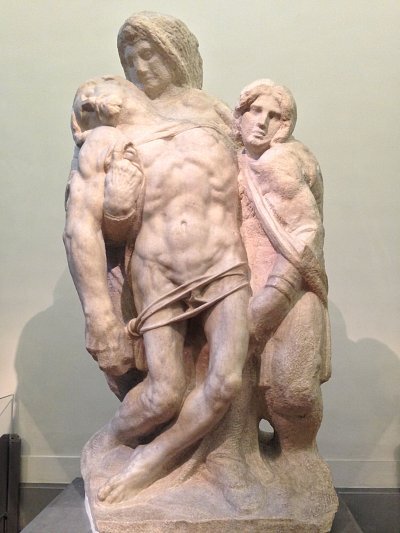
Musical instruments
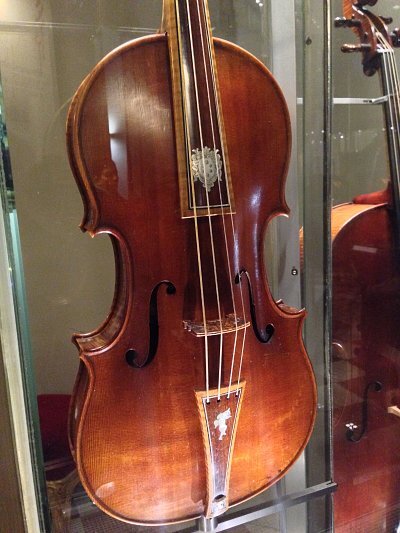
Founded in 2001, the Department of Musical Instruments is home to a core of the former collection at the Conservatorio "Luigi Cherubini" in Florence and displays about fifty pieces from Tuscany's granducal private collections, mainly those of the Medici and Lorraine families, gathered between the second half of the 17th through early 19th centuries.
There are among its notable holdings a tenor viola and a violoncello by Antonio Stradivari from 1690 forthequintet model for Grand Prince Ferdinando de' Medici, a Niccolò Amati violoncello (1650), and an oval-shaped Cristofori spinet. Among its truly unique possessions is an all-marble Psaltery Besides the instruments, some works by Anton Domenico Gabbiani and Bartolomeo Bimbi are present in the museum, specifically related to the musical heritage of the Medici court.
Multimedia stations enable visitors to listen to the sounds of specific displayed instruments while introducing them to music throughout the era of the Florentine grand duchy.
The Accademia Gallery Bookshop
A fine art selection of the Official Books about Accademia Gallery in Florence.
You can Book them online at a Special Price!
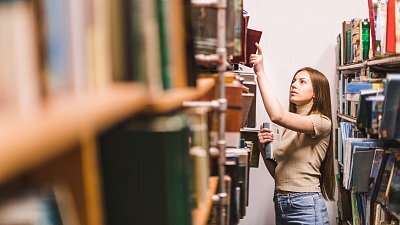
Historical Archives
The Lorenzo Bartolini Historical Archive and the Gatti Krauss Donation.
THE LORENZO BARTOLINI HISTORICAL ARCHIVE
Digital and indexing of the complete Lorenzo Bartolini archive was done in 2021-2022.
This archive came to the Galleria in two separate donations made in 2011 and 2013. Purchased from the heirs, at that time the two collections were very carefully reorganized and cataloged.
It comprises nine sections of personal and professional letters, emails on the topic of commissions, signed copies, drafts, legal and financial papers, notebooks (containing signed drawings) as well as printed material which spans 1810 to 1850-the year the sculptor passed away.
Subsequent documentation until 1935 was related to inheritance issues.
THE GATTI-KRAUS DONATION
In the Department of Musical Instruments of the Galleria dell’Accademia, is one room dedicated to the late 19th-century Florentine musicologist, anthropologist, and collector Alessandro Kraus.
In this area, visitors may consult the vast collection of books by Kraus himself, donated in 2008 by his heir Mirella Gatti-Kraus to this Gallery: over 200 volumes on the history of music; 387 opera librettos (some exceptionally rare and ancient); the earliest ones go back to 1675, fifty others having been published between the late 17th and late 18th centuries, while another 280 appeared during the 19th century.
The library has continually enriched its fund of music monographs as further volumes (in periodicals or microfiche) have entered through donations or through institutional exchanges with related institutions interested in museology regarding research on exhibitions and restoration projects at this Gallery as well. At present, work is completed herein lately reorganized and inventoried Library of Music Monographs.

